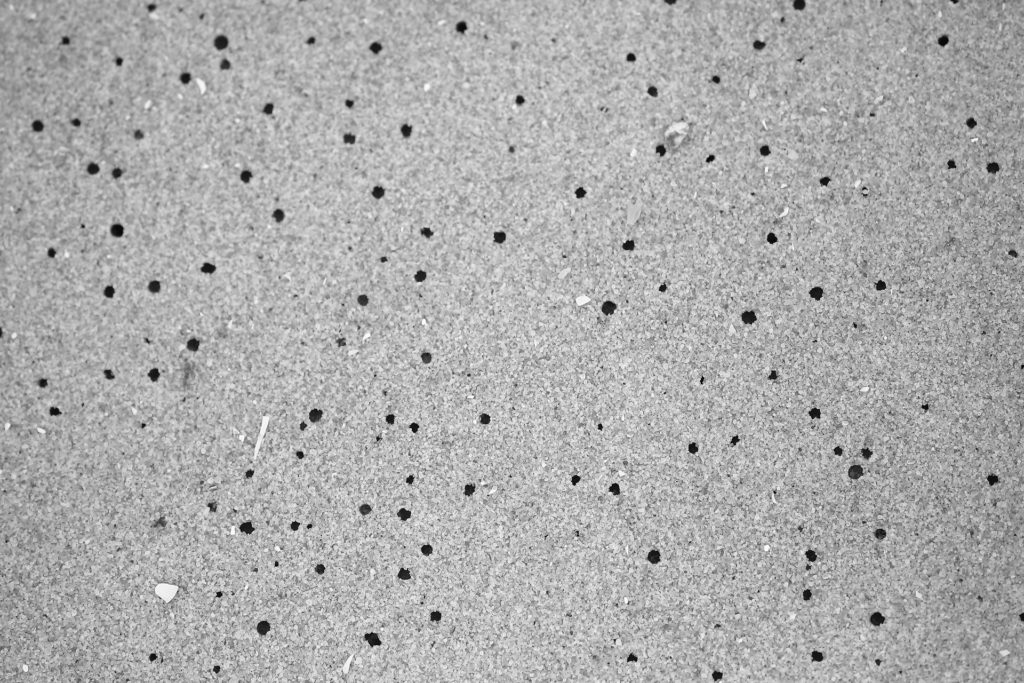Common grackles colonize sanderling's niches
These strange holes in the sand appear in intertidal zones, where up to 4000 invertebrates live in one square meter in the sandy beach. One of those, the mole crab (Emerita analoga), feeds on the plankton and detritus with each wave, when the wave is out, these crustaceans are quickly hidden beneath the surface, letting these pores in the sand.

In North America, the sanderling (Calidris alba) is a long migrant shorebird species that mainly feed on the mole crabs, using their long and fast legs to rush around at the edge of the surf. Sanderlings hunt for those and other invertebrates by plunging their long beaks into the sand.

Sanderlings were considered the kings of the shore, but now a new rival arrived. It is called common grackle (Quiscalus quiscula). This species is aggressive and scare the shorebirds, occupying their feeding niche.

Although evolution is a slow process, common grackle has no time to adopt suitable structures such as a long bill, or long legs to be adapted to sandy beaches as shorebirds do. Yet, they are smart enough to displace them and get the niche. Grackles are incredibly smart birds, and they most likely learn from shorebirds to catch the invertebrates on the edge the waves by observing their behavior.

On the image below, we can see how this common grackle that successfully captured a mole crab, goes far away from the water, to a safer zone.

Even in these new niches, grackles still show gregarious behavior and they learn not only from other shorebirds but also from the pioneers in its species.

Of note, these birds are much smarter than we initially thought. In the incoming years, they will be much better adapted to the new challenges that all the living species face.
Photographs and text by Hector Cordero.